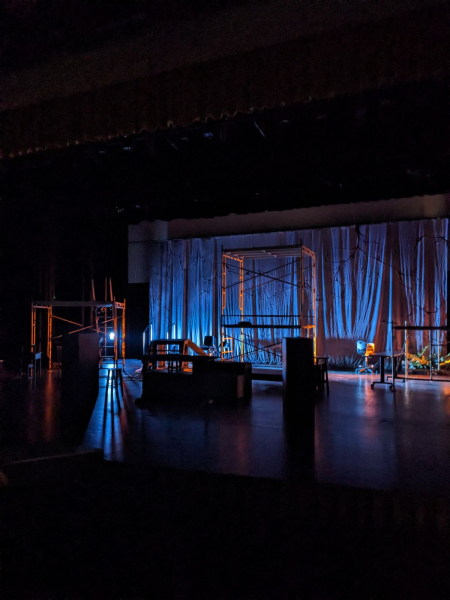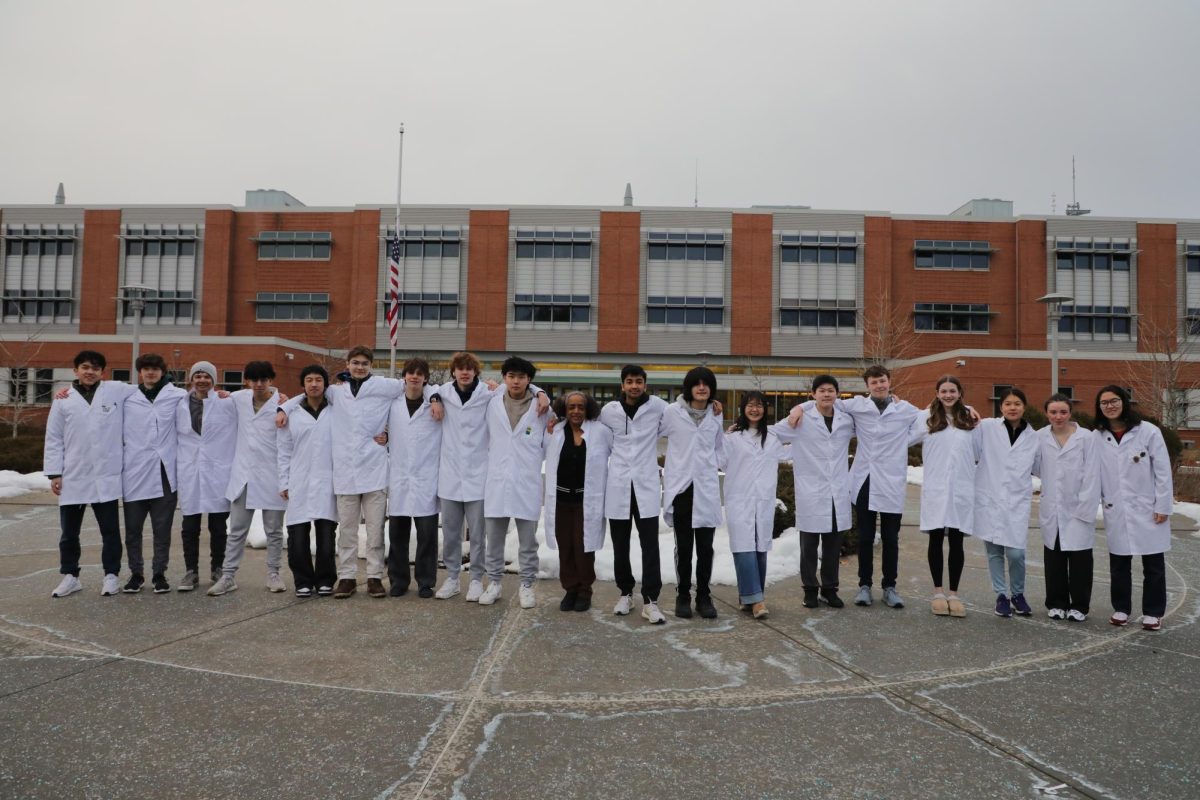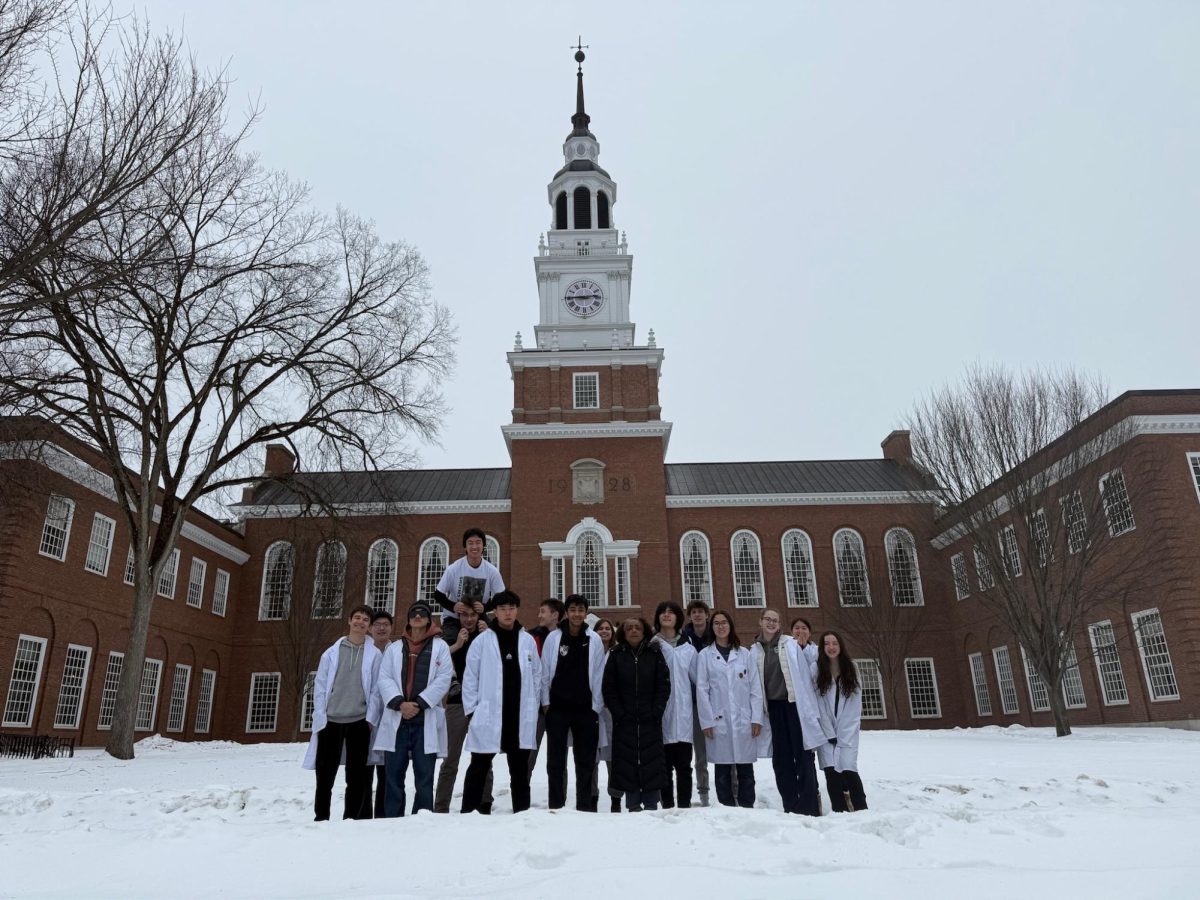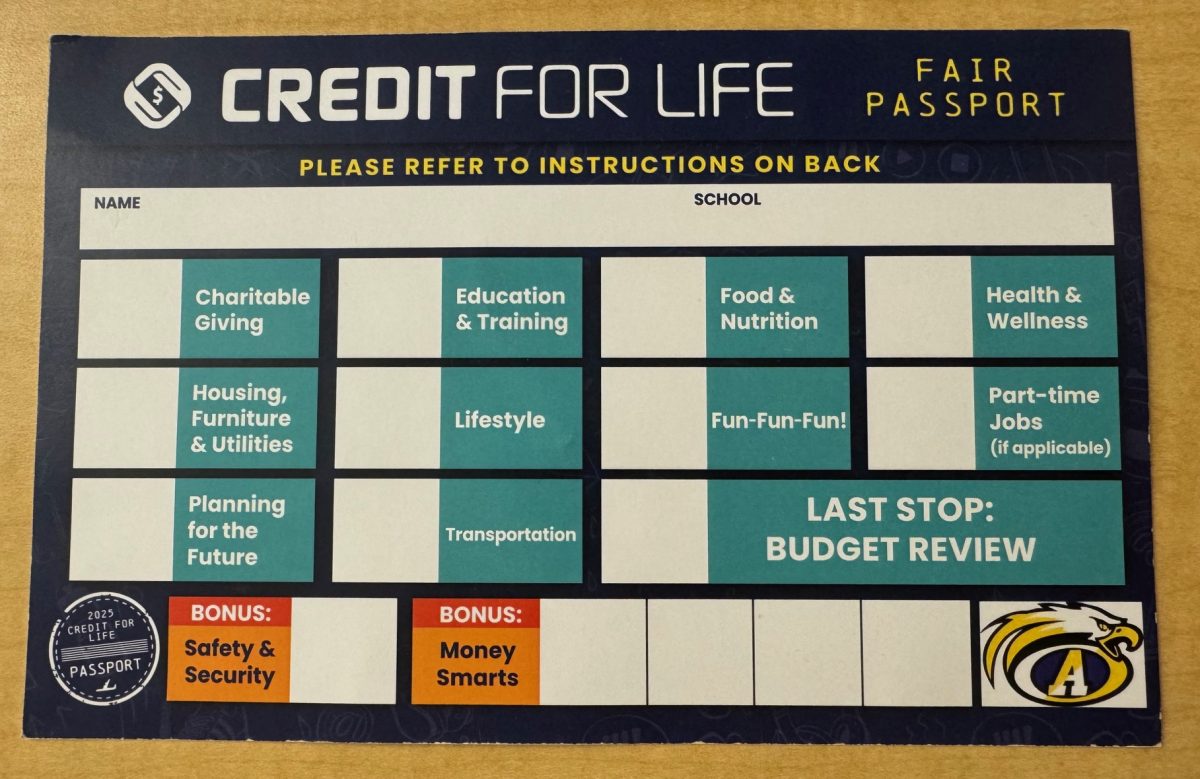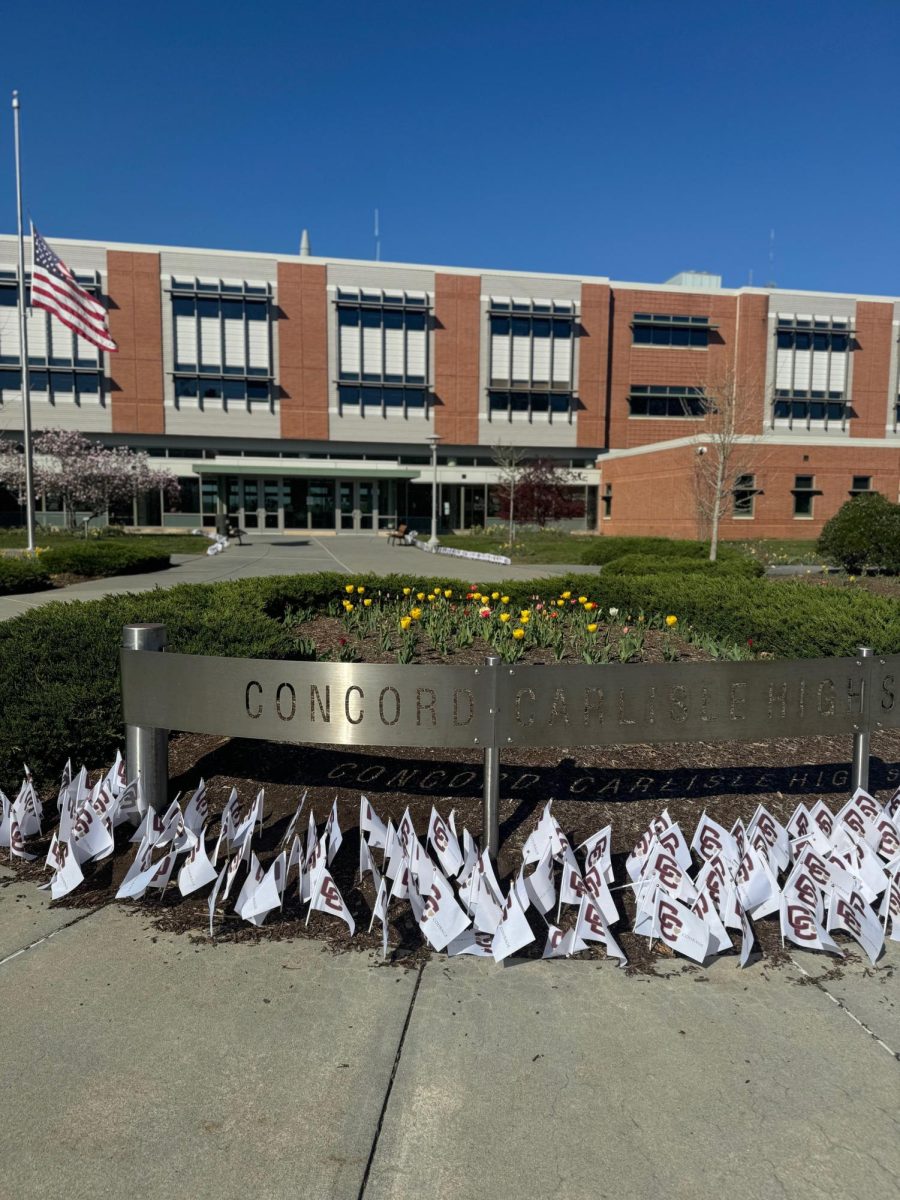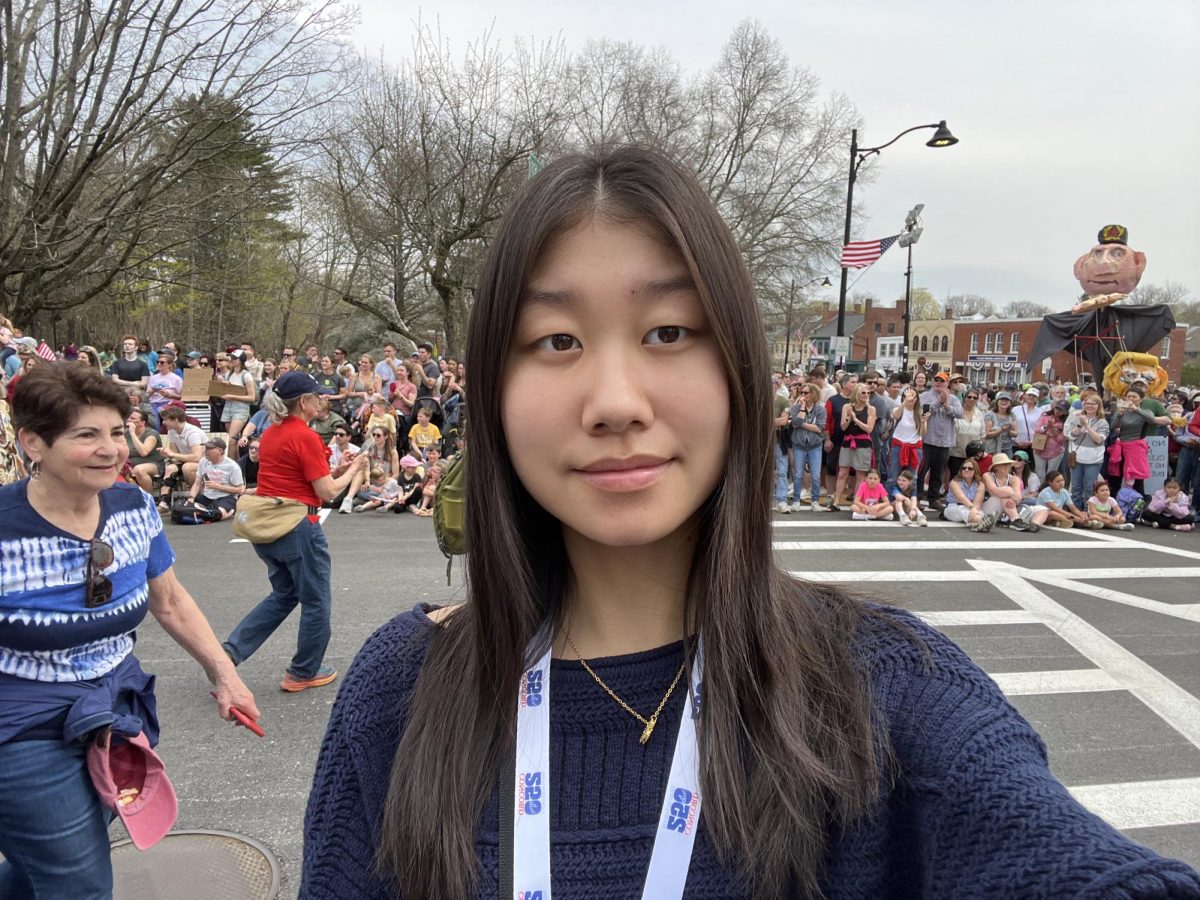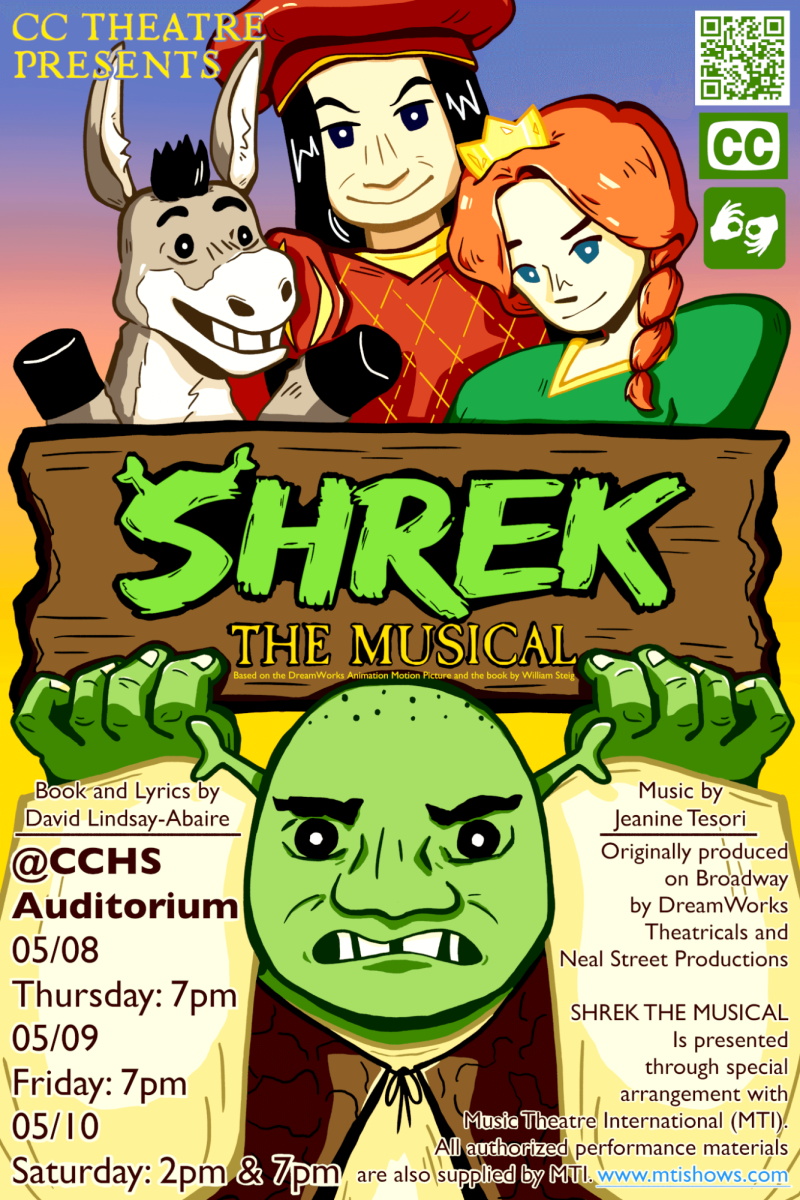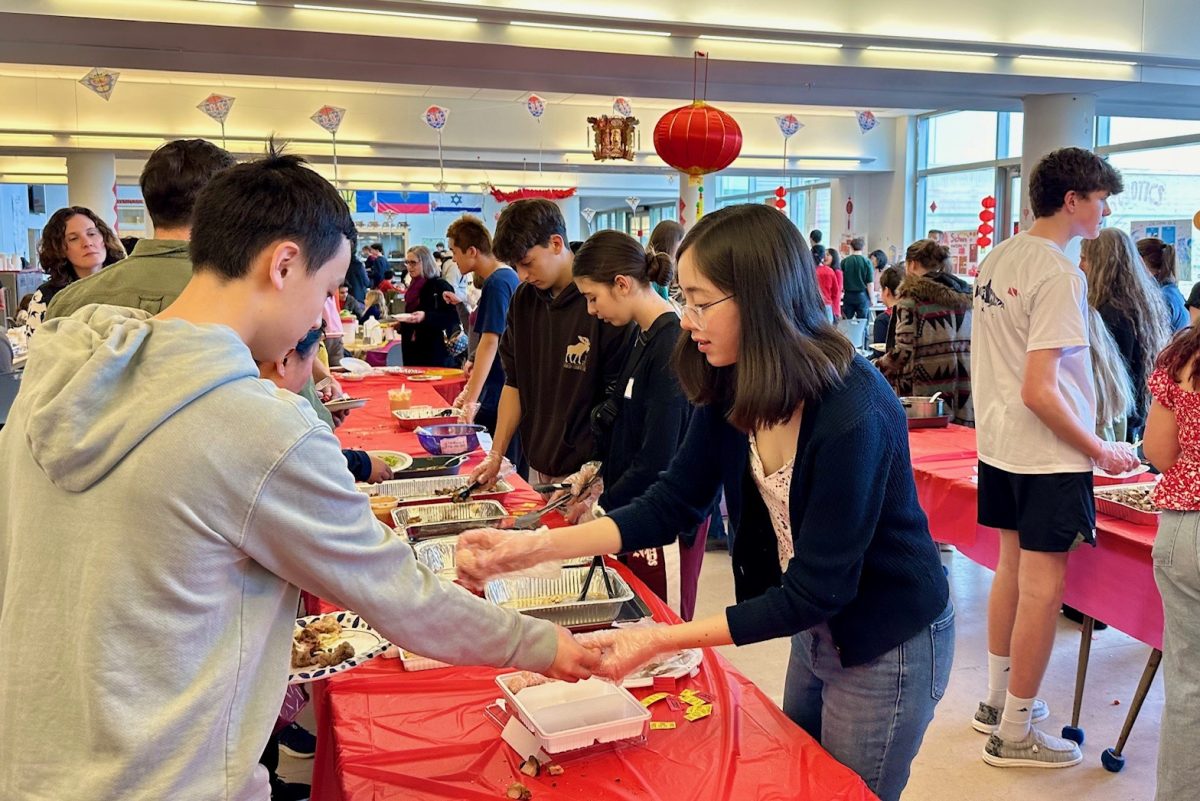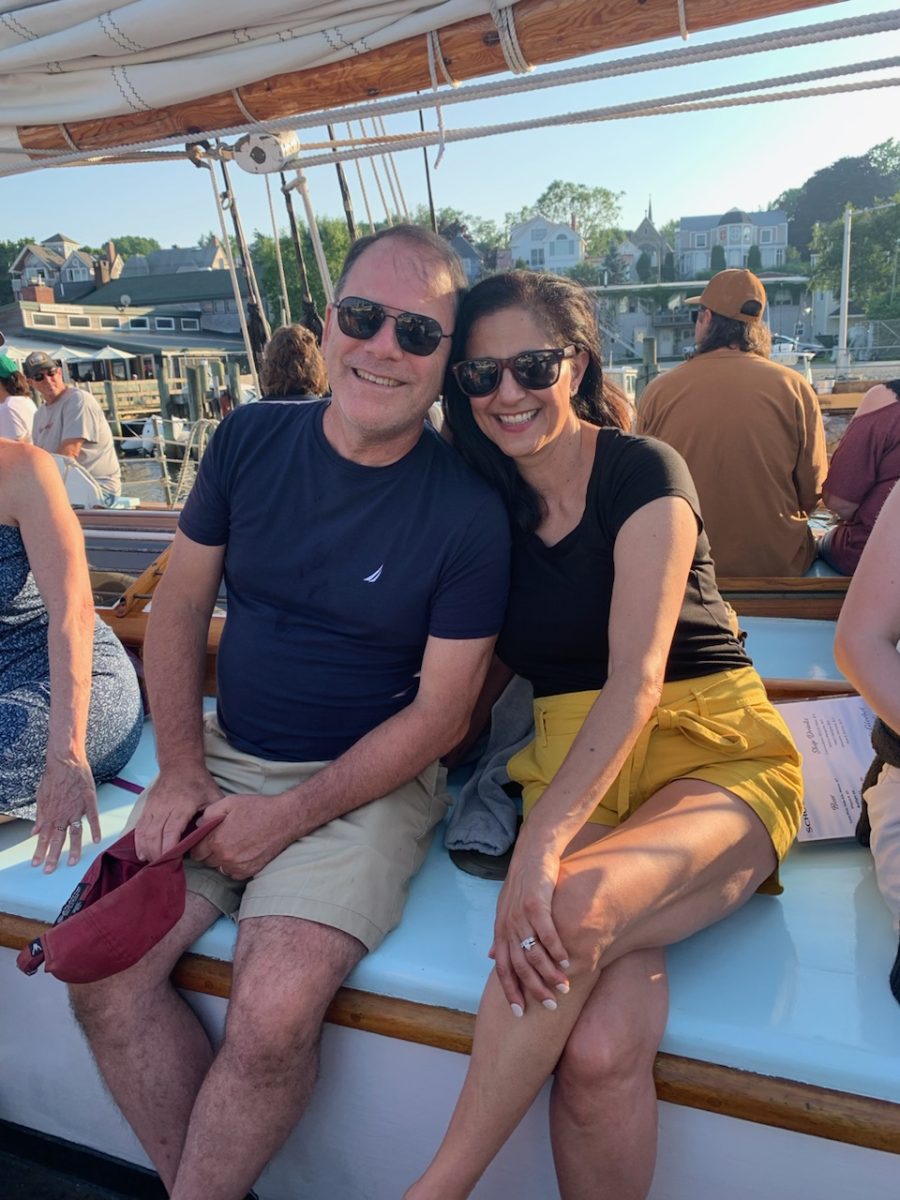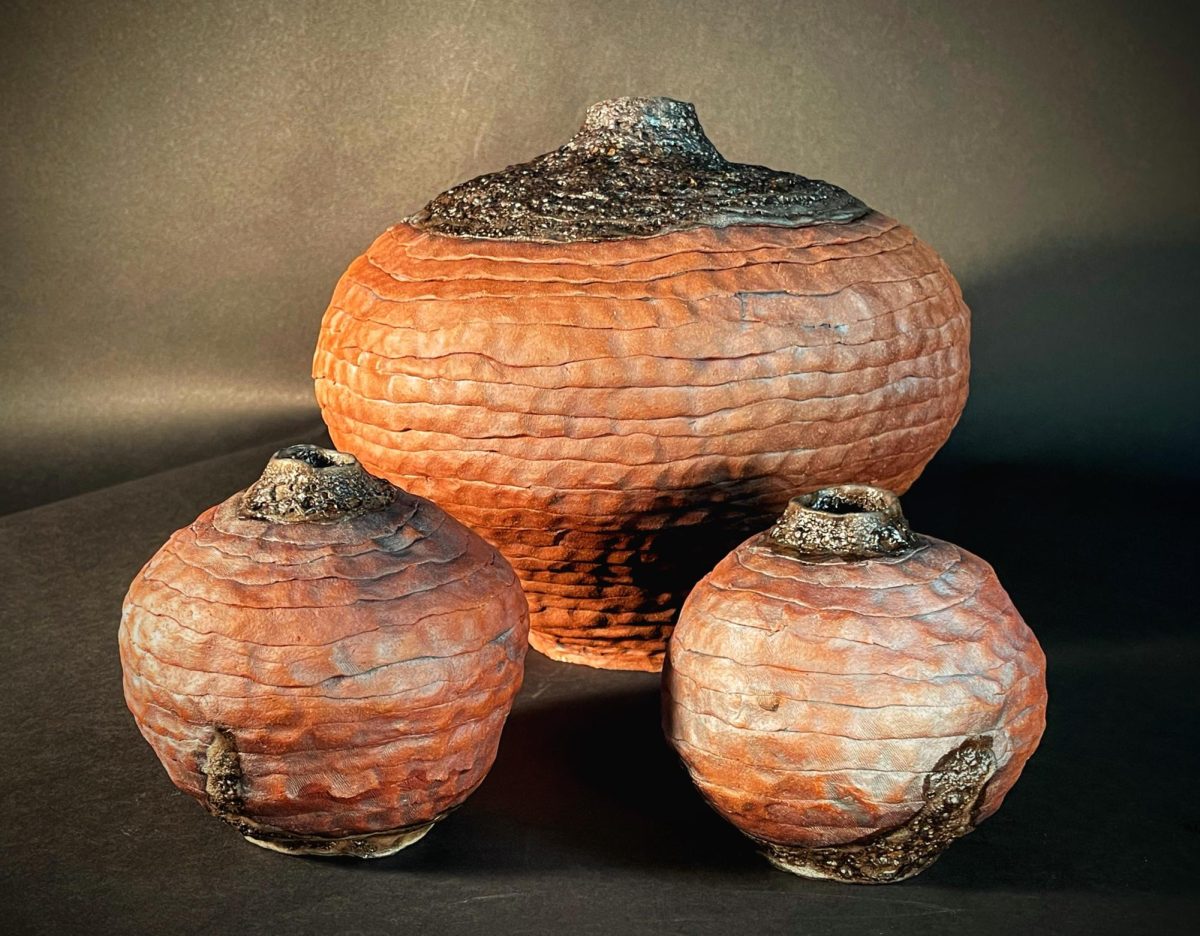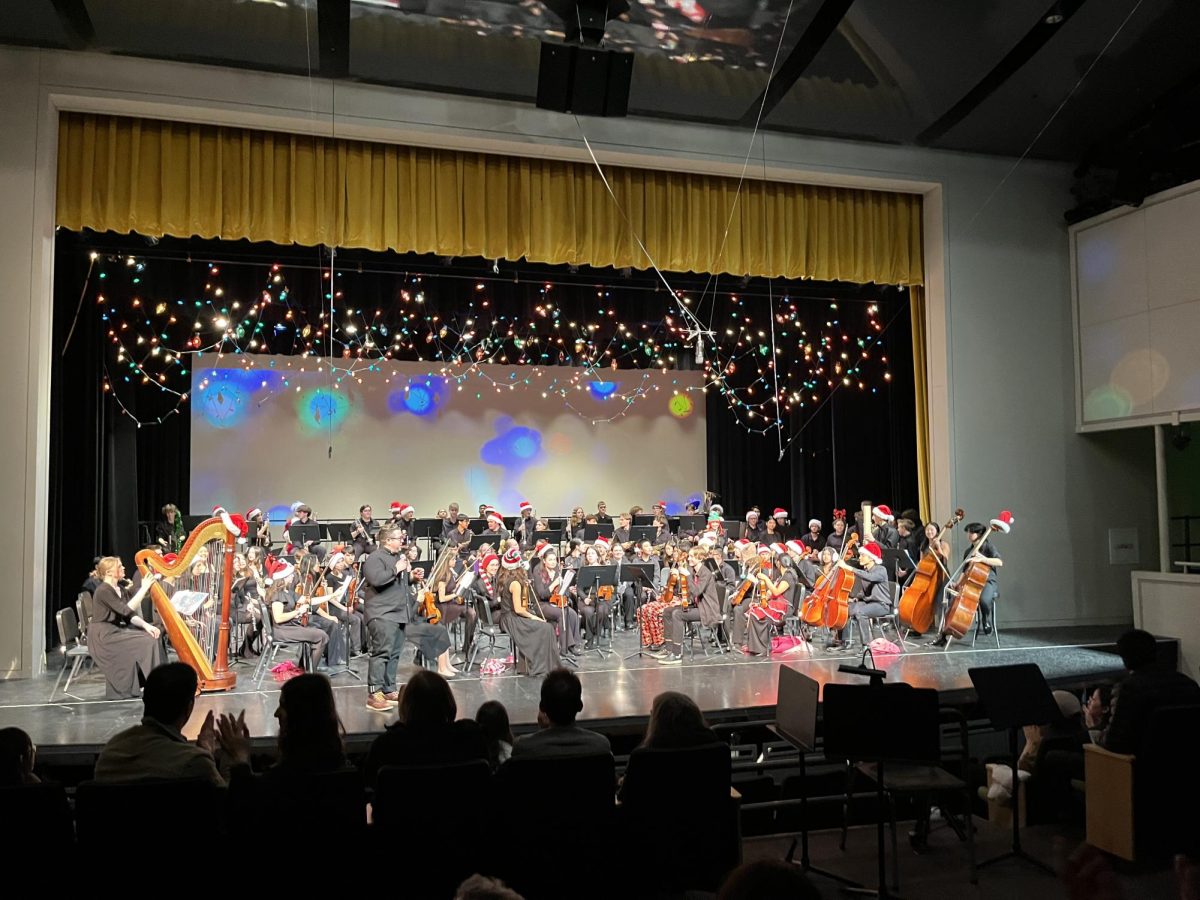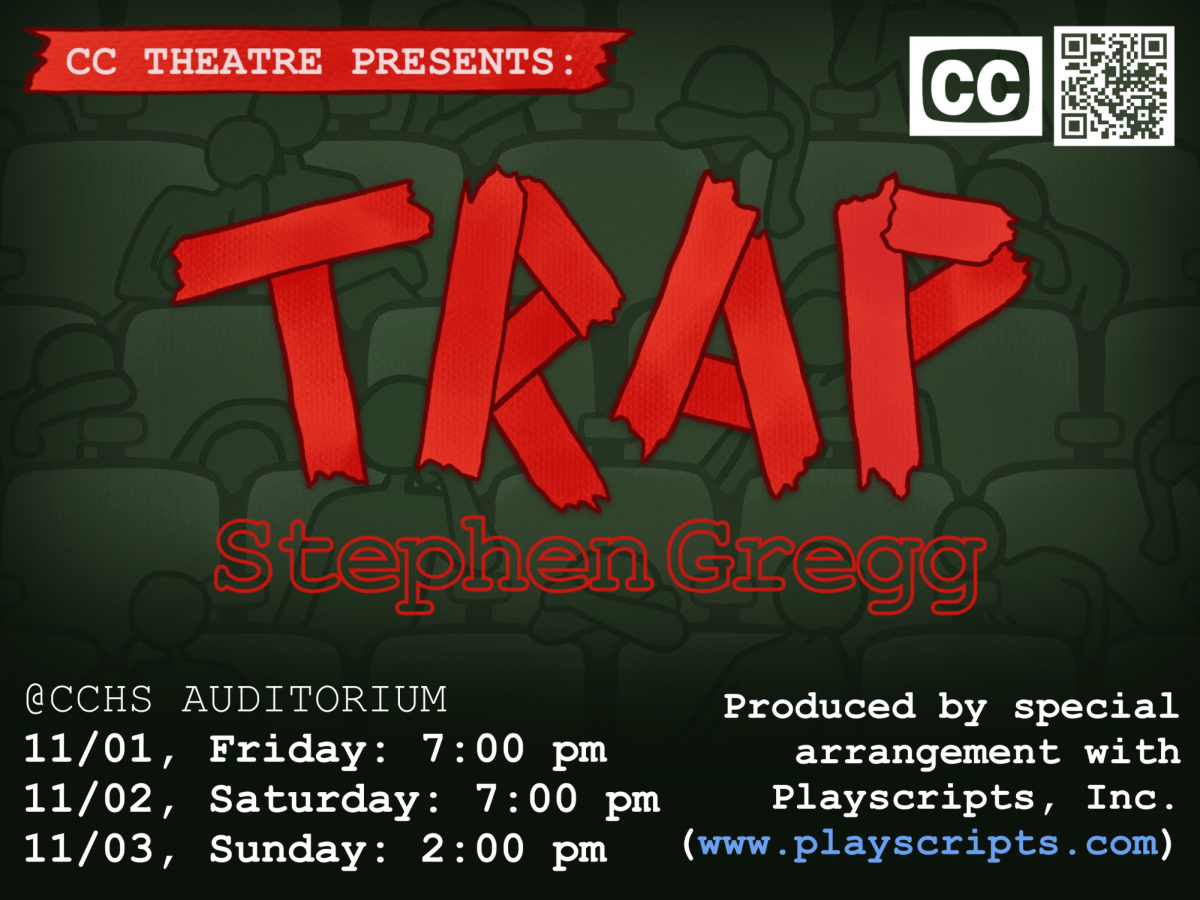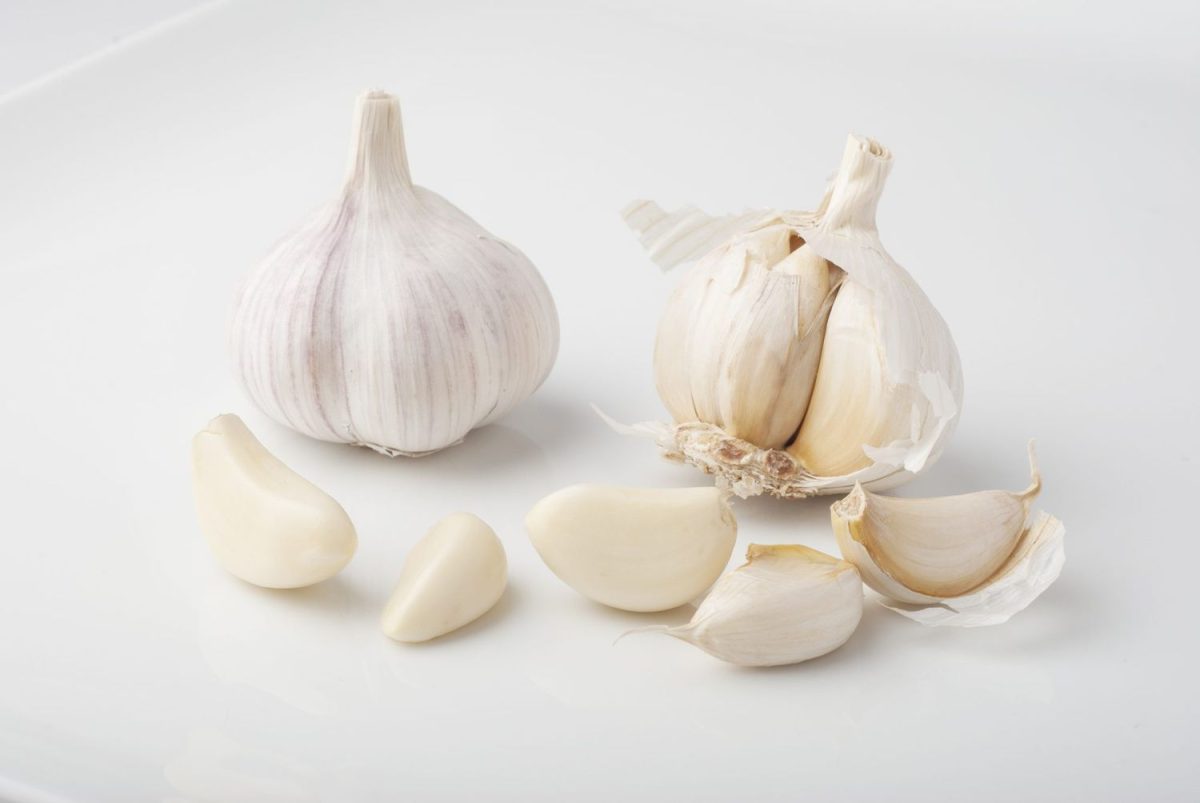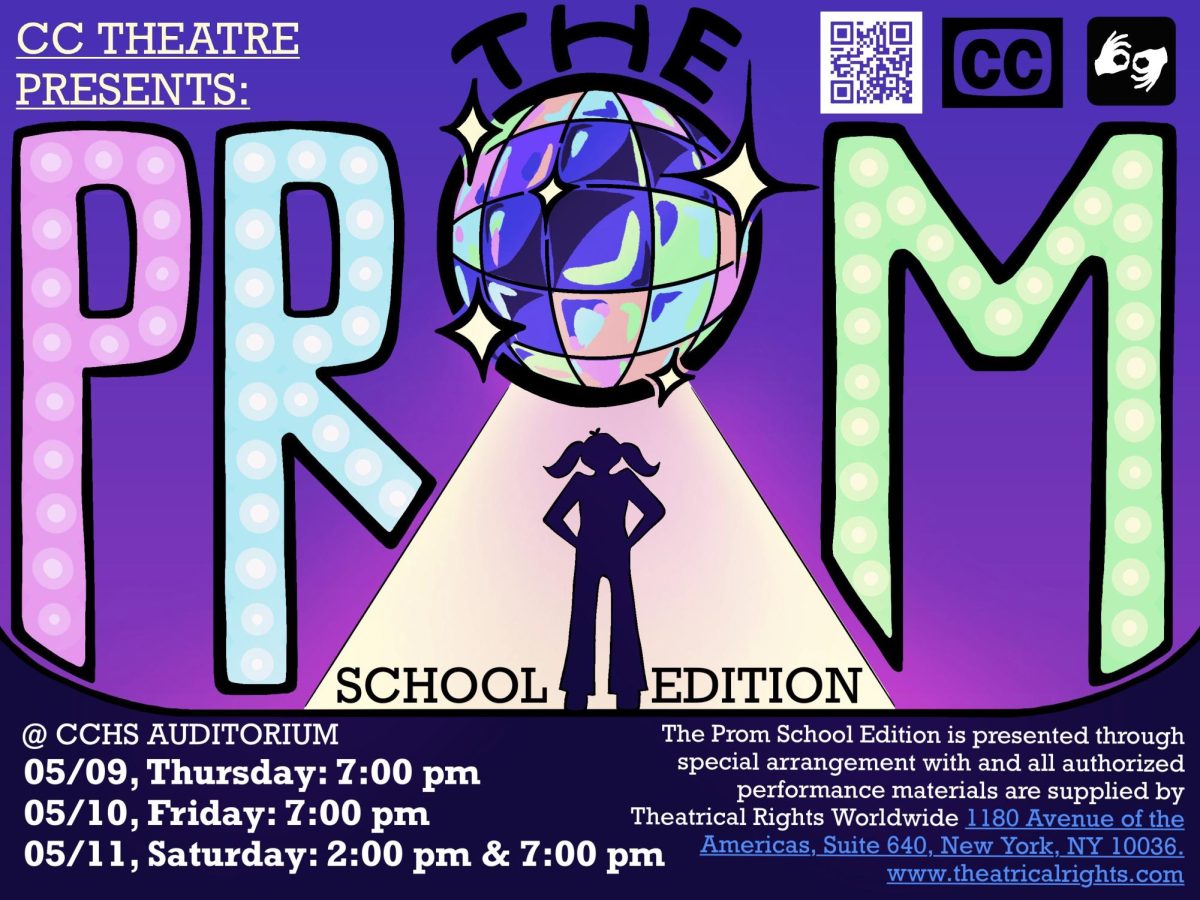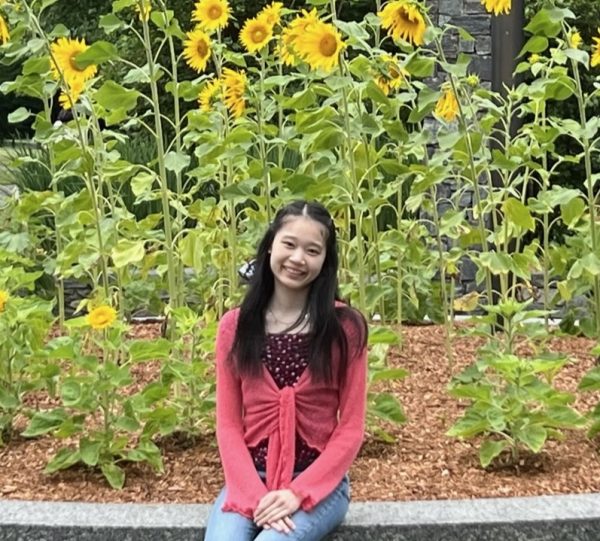Note: Versions of this article were published in the 10/25 issues of the Concord Bridge and Carlisle Mosquito.
Shhhhh… Can you keep a secret?
That’s what Concord-Carlisle High School’s theatre program wants to know this fall amid eerie lights, spindly platforms, and scurrying students. CC Theatre will be performing “Trap” at the CCHS auditorium at 7 P.M. on Friday, November 1 and Saturday, November 2, with a matinee at 2 P.M. on Sunday, November 3. Purchase tickets at cc-theatre.org. All shows will be open- and closed-captioned.
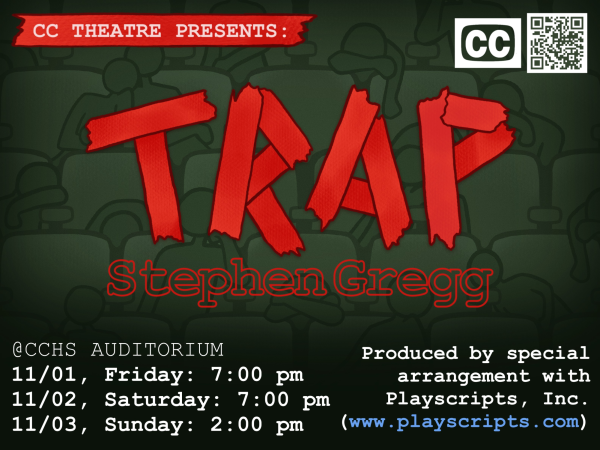
In the words of CC Theatre director Melissa Charych, Trap “centers around an unthinkable event: every person in the audience of a high school play in Menachap, California has fallen unconscious – every person but one.” She adds conspiratorially, “I’d tell you more, but… I can keep a secret.”
Charych says that although Trap’s genre is listed “documentary style horror… it’s less horror and more of a psychological thriller.” Sonya Mellnick, ‘27 (Accessibility), calls the show “mind-bendy,” describing that the production “messes with… emotions and minds” and “almost fabricates reality and makes the theatre become sentient.” Luke Reed, ‘25 (Student Assistant Director, Sound Designer) similarly says that the show is “disorienting” and “will make you think.”
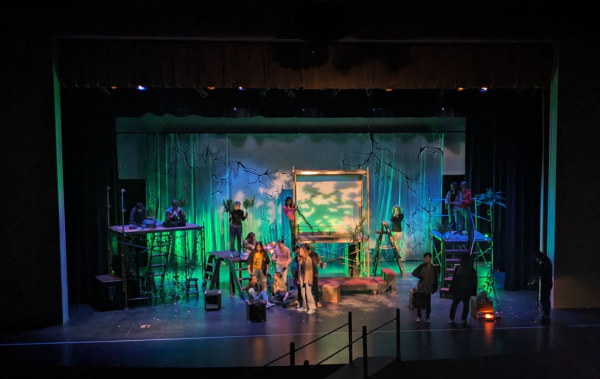
The choice of material represents a genre previously unexplored by the program and also contrasts with Clue, last fall’s “big-name crowd pleaser,” which Charych explains is part of her goal to “offer students a wide range of material throughout their four-year experience in the program.” She adds, “I hope our audiences will appreciate CC Theatre taking on a new genre and also the surprises within this play itself,” including the “mystery” that she hopes will make the audience “come away with even more questions.”
Ned Roos, CC Theatre’s technical director, affirms that the show is largely based in “curiosity and intrigue” and a message of “what exactly is the line between… what’s factual and what’s not.” He says he expects many audience members to “[leave] the theater going, ‘What just happened?’”
In terms of the production process, Trap’s expandable cast is a “huge highlight” for Charych, who strives to include all interested students in productions. Charles Mastromarino, ‘26 (Heche), agrees that it’s “nice seeing so many people… during rehearsal, as the cast for the [fall] play is normally fairly small.” Mellnick refers to the “similar role size” among cast members as another difference from previous productions. Simultaneously, Charych says that almost all of the actors will be playing multiple roles, “changing key costume pieces to illustrate the character changes as they work together to solve the mystery.” Mastromarino says he has “really enjoyed the character building aspect,” explaining that he has found it “a creative and challenging experience” to make the characters interesting when many “could be described as one-note if handled without sufficient care.” Dia Wang, ‘26 (Props Co-Manager) adds that “the flexibility in interpretation of different roles allows the actors to really explore their characters… The fact[s] that [the play] shifts between time periods and the settings aren’t detailed that thoroughly also allow more freedom for the tech crews to interpret the backdrop.”
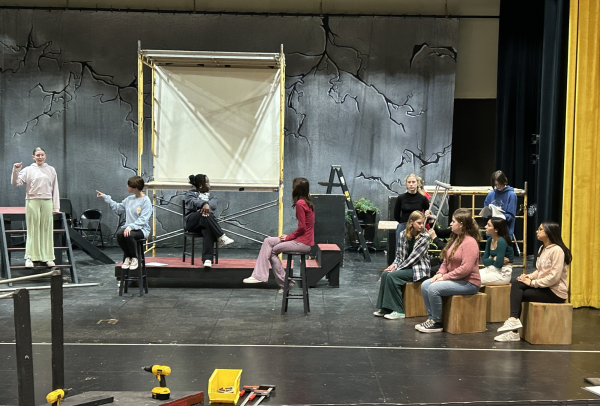
The skill of actors and techies in recognizing and creating these nuances is just one snapshot of the many ways Charych expresses that the program’s students “are once again outdoing themselves in their high caliber professional work.” Another such area is the set, which Charych calls “a wonderful playground for the actors.” She says, “We’re using scaffolding and pieces of rehearsal furniture in different ways to create the various sets within the play.” Mellnick adds that they “love the levels [the set] contains” and how “it offers every character… a chance to really delve into their character’s brain.”
Roos says that the set is technically “one of the tricky things about this show” given that “there are a million different ways to do it,” not only because “[Trap is] a smaller play that [hasn’t] been produced as many times, but also… because of the structure of the play.” While the construction crew is using rented scaffolding rather than building it from scratch, Roos emphasizes that what they are actually doing is “more complicated,” from integrating metal and wood pieces, assembling a curved staircase, and building bridges that extend off the stage. In fact, Calista Wong, ‘25 (Assistant Stage Manager, Graphic Designer) describes that there is constant movement both onstage and offstage – literally, since the show “utilizes pretty much all of the auditorium space” and “everyone has to move and adapt quickly” between the “distinctions in environments.” Wong adds there is thus “a lot of creative freedom in how each scene transitions from each other.”
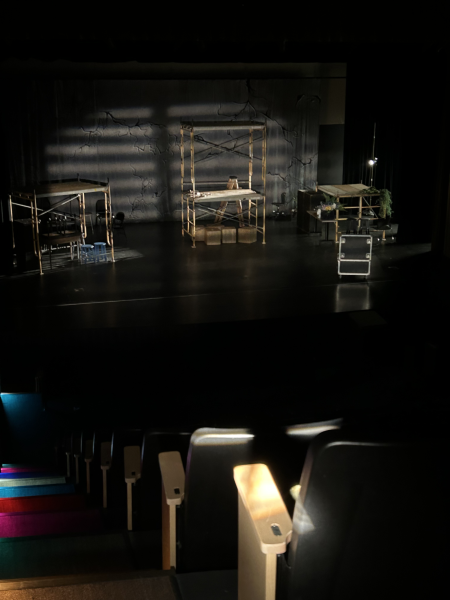
The “documentary” thread within the show, and particularly the projections used to create this effect, is another simultaneous challenge and highlight for both Charych and Roos. Charych refers to Reed as the student who “has really taken the lead on this effort” with his “many creative ideas to use projections to highlight what’s going on onstage.” Reed says that he appreciated being able “to help make the creative decisions” to “create an immersive show” by approaching the production from both “a sound/lighting angle and a directing angle.”
But beyond set details, successfully unnerving an audience the way Trap seeks to do can be difficult. Mastromarino expresses that “there is a fine line between being dramatic-scary and being over-the-top unbelievable scary.” As a result, the production crew is experimenting with “some neat lighting opportunities,” including “some things that we’ve never done before,” to evoke a sense of “other-worldly spookiness,” according to Roos. Lincoln Green, ‘25 (Lighting Designer) describes that some of these effects include “down and side lighting, creating a lot of shadows and silhouettes,” and he adds that “the lighting is definitely more intense [than] in past plays,” especially with lighting the scaffolding in the set and managing the many “moving parts.” He says that while the crews “still have a lot of work to do,” they “can’t wait for opening night.”
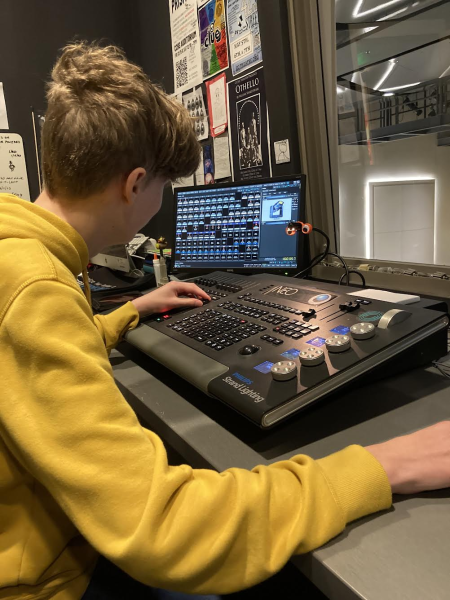
As Reed says, it’s ultimately up to the audience “to see for themselves what Trap is about. What they take away from the performance will be something memorable.” Are you intrigued? Or, perhaps the better question is: Can you keep a secret?
